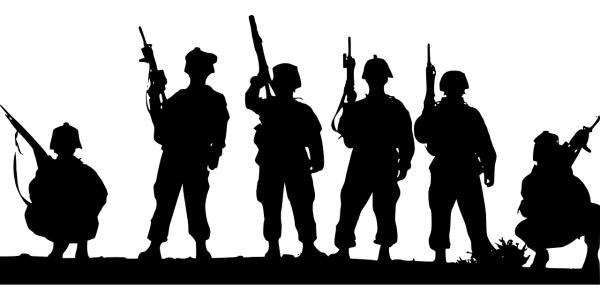“We compare rates of firearm-related homicides and non-fatal shooting injuries among military-age males (i.e., young adults aged 18 to 29 years) in selected parts of 4 major US cities with rates of death and injury faced by US soldiers deployed to the recent US wars in Iraq and Afghanistan.”
The researchers used data on all fatal and non-fatal shootings from Los Angeles, Chicago, Philadelphia, and New York during 2020 and 2021. Data were aggregated at the zip code level to incorporate demographic data from the census into their research. Wartime combat mortality and morbidity data come from military records from the active phases of the wars in Afghanistan and Iraq.
Of 129,826 young adult males aged 18 to 29 years living in the top 10% most violent zip codes in the 4 cities studied:
- 35.2% were Black, 54.7% were Hispanic, and 31.1% were White.
- There were 470 homicides and 1684 firearm-related injuries.
- Young adult males in Chicago and Philadelphia in the top 10% most violent zip codes “faced substantially higher risks of firearm-related homicide and injury than US soldiers who served in one of the nation’s 2 most recent theaters of war.” In Chicago, this risk was almost double that of combatants; in Philadelphia, 15% more. The chance of being wounded in Chicago and Philadelphia was less than in Afghanistan and Iraq, so as a "war zone" more were killed and fewer wounded. I am sure that has a great deal to do with how quickly the wounded are evacuated from real combat zones.
- Young adult males in New York and Los Angeles faced significantly less risk of death or injury than combat soldiers.
- “The risk of firearm death and injury that prevails in the neighborhoods studied here was almost entirely borne by young adult men from minoritized racial and ethnic groups.” In Chicago, more than 90% of death and injuries were among Black males. In Philadelphia, Black males accounted for about 75% of deaths and injuries, and Hispanic males about 15%. The aggregate rate for White males was considerably lower at about 3%.
After many weather-related disasters, the media can always find a survivor who describes the setting as “a warzone of destruction.” Two of our largest cities, Chicago and Philadelphia, experience enough firearm violence against others that numerically, they are, in fact, urban warzones. The study has limitations; it was only able to assess cities with complete information on firearm violence. We don’t know whether these two cities are outliers or symptomatic of conditions elsewhere – a question for additional research.
The researchers note that the combat data involves individuals exposed to violence for a relatively contained period, a 12-month deployment. The VA estimates that Post-traumatic Stress Disorder, PTSD, occurs in 15% of veterans in the age group being studied, 18-29. The violence in those most violent of zip codes go on year after year. Is it possible that for those living in these communities, we have a silent epidemic of PTSD? We do not have an answer to that question; maybe we should find out.
Source: Comparing Risks of Firearm-Related Death and Injury Among Young Adult Males in Selected US Cities With Wartime Service in Iraq and Afghanistan JAMA Network Open DOI: 10.1001/jamanetworkopen.2022.48132




